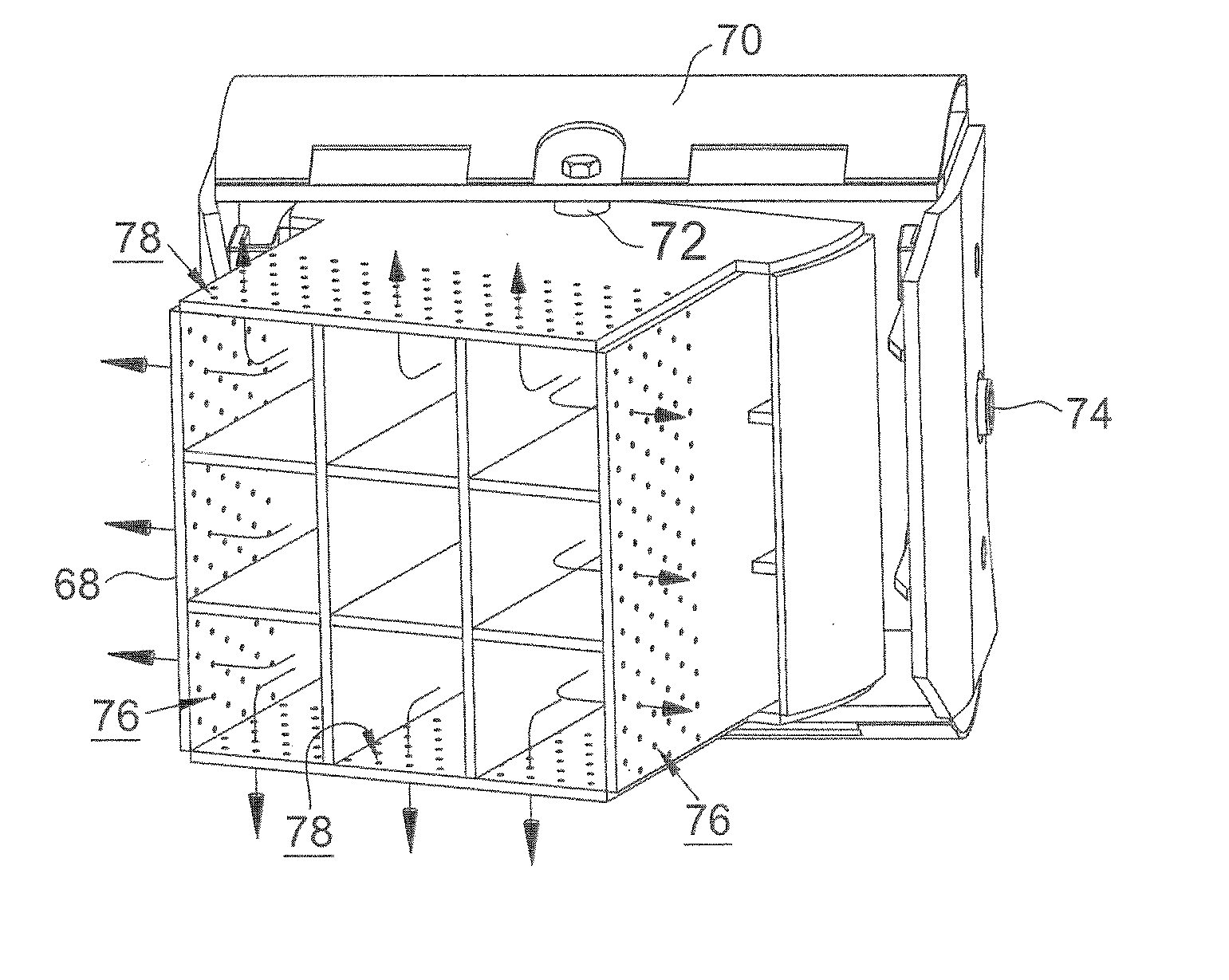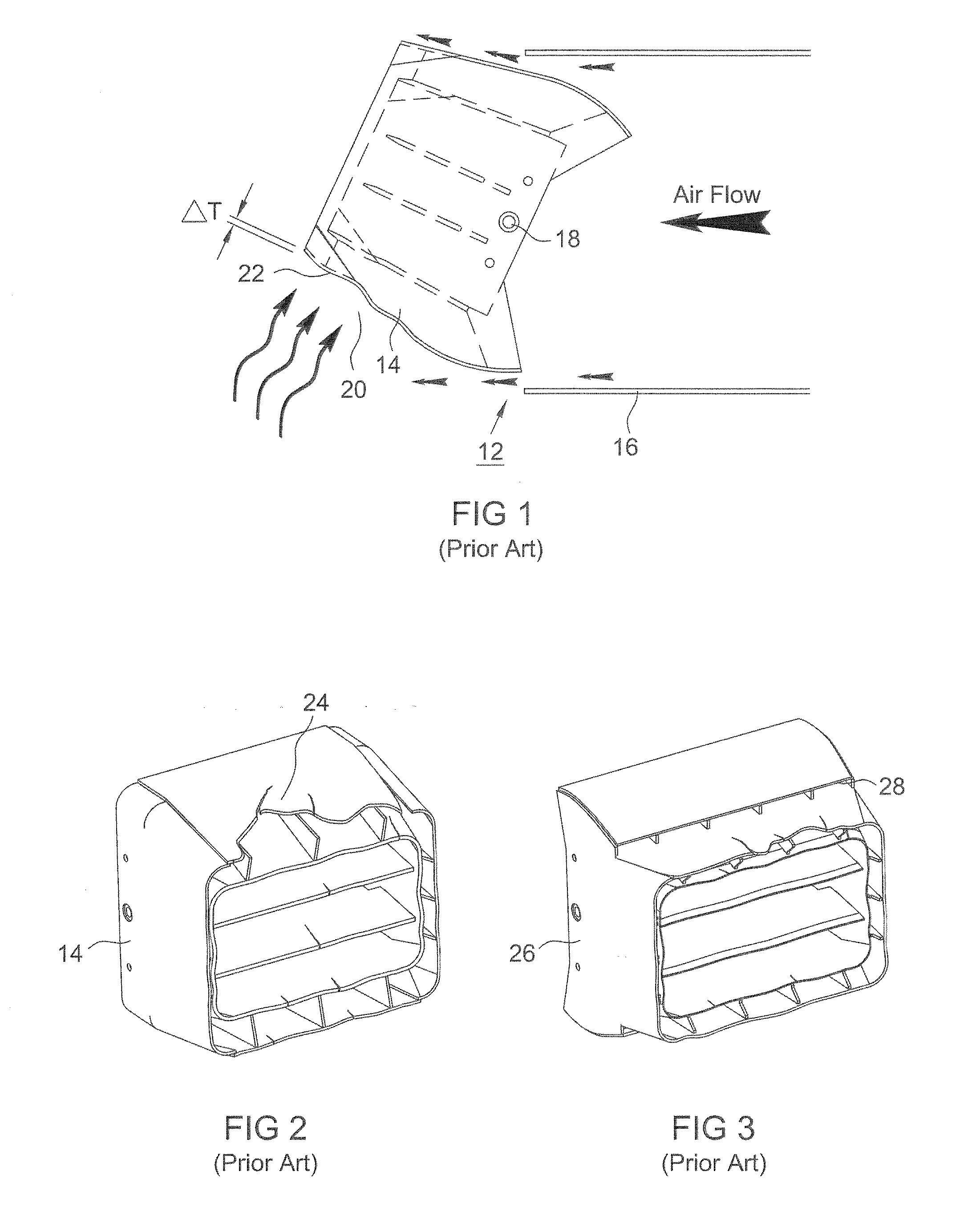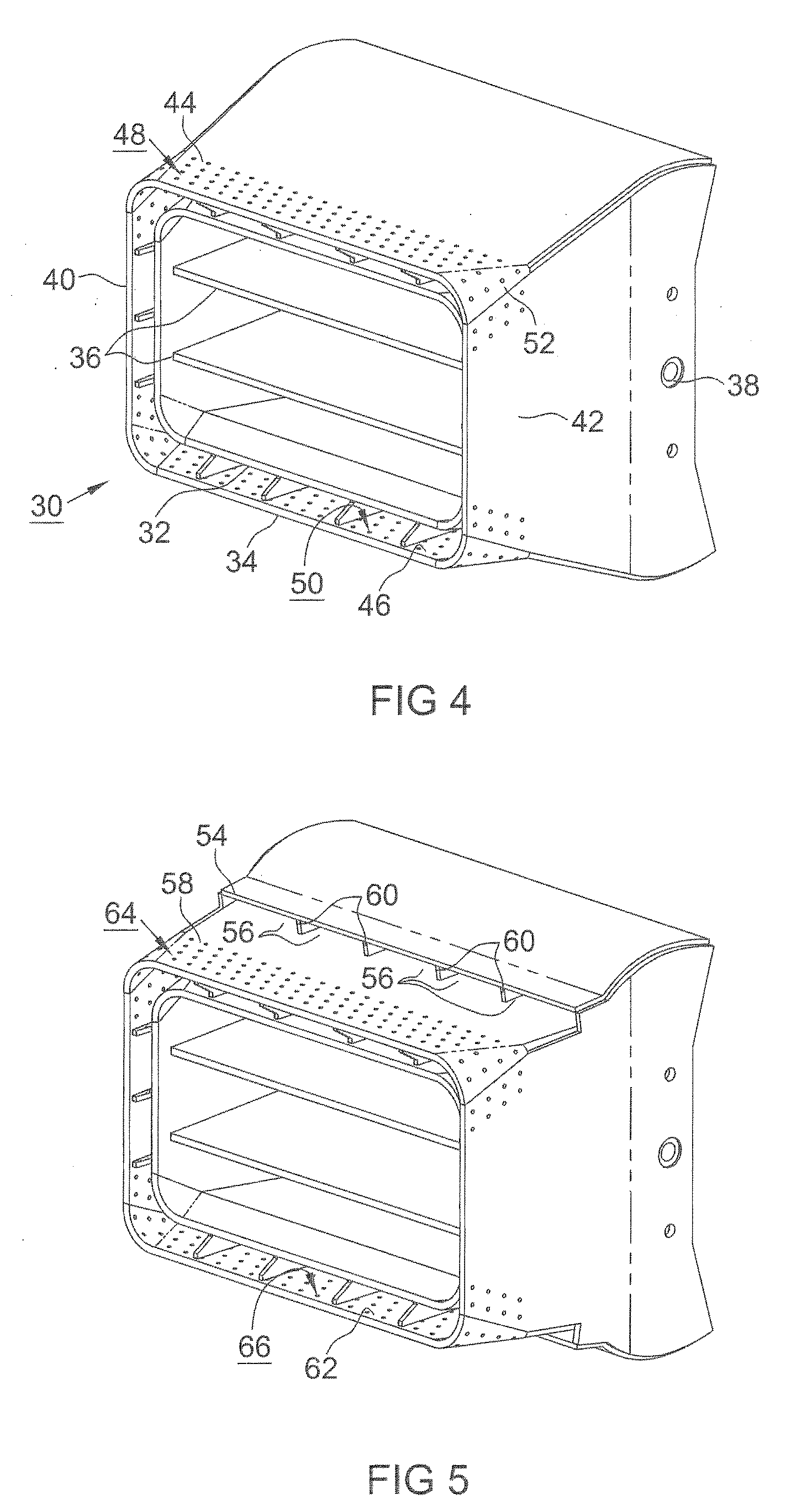Nozzle for feeding combustion media into a furnace
a technology of combustion media and nozzles, which is applied in the direction of combustion types, combustion using lump and pulverulent fuel, lighting and heating apparatus, etc., can solve the problems of oxidation, thinning of stainless steel plates, and eventual closure of air and fuel passages of nozzles, so as to prevent thermal distortion and prolong service life
- Summary
- Abstract
- Description
- Claims
- Application Information
AI Technical Summary
Benefits of technology
Problems solved by technology
Method used
Image
Examples
Embodiment Construction
[0028]In the conventional nozzle of FIG. 1, coal along with air is delivered to the interior of a boiler furnace through a coal nozzle 12 and a tilting nozzle tip 14. Secondary air in conduit 16 is also delivered through the tilting nozzle.
[0029]The nozzle is mounted on trunnions, one of which is shown at 18, and tiltable on a horizontal axis. That is, its pitch can be adjusted. In FIG. 1, the nozzle tip is tilted upward. As shown by arrows, air flowing from conduit 16 through a leakage path between the conduit and the nozzle tip flows along the top wall of the nozzle tip, keeping the upper part of the nozzle tip cool. However, the air leaking through the space between the conduit and the lower part of the nozzle tip tends to separate from the nozzle tip allowing a dead zone 20 to exist adjacent the bottom wall 22 of the nozzle tip. As a consequence of the dead zone, the air flowing through the space between the conduit wall and the lower part of the nozzle tip has comparatively lit...
PUM
 Login to View More
Login to View More Abstract
Description
Claims
Application Information
 Login to View More
Login to View More - R&D
- Intellectual Property
- Life Sciences
- Materials
- Tech Scout
- Unparalleled Data Quality
- Higher Quality Content
- 60% Fewer Hallucinations
Browse by: Latest US Patents, China's latest patents, Technical Efficacy Thesaurus, Application Domain, Technology Topic, Popular Technical Reports.
© 2025 PatSnap. All rights reserved.Legal|Privacy policy|Modern Slavery Act Transparency Statement|Sitemap|About US| Contact US: help@patsnap.com



